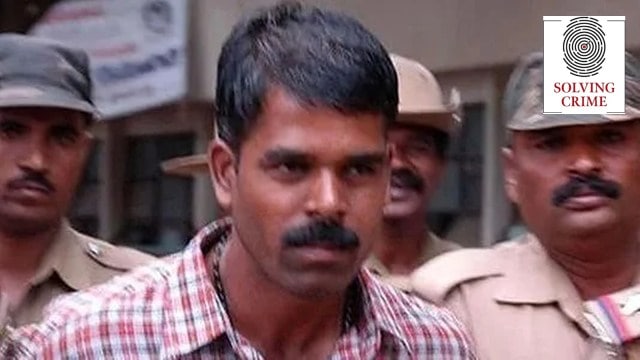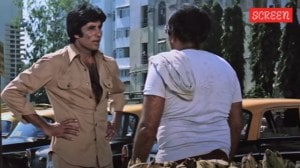Solving Crime: How an alert auto driver in Karnataka helped end ‘serial rapist’ Umesh Reddy’s assault-murder spree
Apart from the Peenya rape-murder case in which he was convicted, investigators were certain that many of the theft cases against Chitradurga native Umesh Reddy involved sexual assault, but the victims never came forward fearing stigma.
 Umesh Reddy Reddy was convicted in nine cases which included rape and murder of the widow. In 2006, Justice K Sukanya, considering it to be rare of the rarest cases, ordered death sentence. (Special Arrangement)
Umesh Reddy Reddy was convicted in nine cases which included rape and murder of the widow. In 2006, Justice K Sukanya, considering it to be rare of the rarest cases, ordered death sentence. (Special Arrangement)During the late 1990s and early 2000s, one person in Bengaluru kept the police force on its toes and triggered worries about women’s safety in the city to the point that his name evoked a sense of fear in the public – B A Umesh Reddy, who came to be known as the ‘serial rapist’.
The dismissed Central Reserve Police Force (CRPF) personnel was not only notorious for the rape-murder of women, his multiple escapes from police custody also added to Reddy’s notoriety. His modus operandi was to target homemakers between 11 am and 3 pm after ensuring that their husbands were away for work. However, investigators say that many of the crimes continue to remain shrouded in mystery as women victims never stepped forward to file complaints fearing social stigma.
Early life of Umesh Reddy
Born in 1973 to a poor family in the village of Basappa Malige, also called Kashipura, in Karnataka’s Chitradurga district, Umesh Reddy has three brothers and an elder sister. Despite owning about 15 acres of agricultural land, the family struggled due to lack of water resources in the region.
As a child, Umesh Reddy allegedly had a habit of stealing books and pens during his school days, and as he grew up he took to stealing goats and sheep from the village and sold them to make quick money. By the time the village realised he was behind the thefts, Reddy was long gone.
In 1994, Reddy was selected to the Central Reserve Police Force (CRPF). Post-training, he was deputed as a guard at the house of a commandant. During this period, he tried to rape the commandant’s daughter but she managed to escape from his clutches. Aware of the consequences of his action, Reddy fled, returning to Chitradurga town. In 1996, he managed to obtain selection as a constable in the District Armed Reserve (DAR) of the Karnataka Police Service. What unfolded later was an unforgettable series of chapters in the state’s history.
The crime trail
One of the early cases involving him can be traced back to November 1996 when Umesh Reddy tried to rape a high school student while she was walking home in Chitradurga. The girl managed to escape but did not file a complaint. However, a month later, Reddy allegedly raped and murdered another 17-year-old girl in the district. Even as this case remained unsolved even after a month, an anonymous letter reached the Chitradurga Superintendent of Police (SP) stating that some influential people were involved in the case. As pressure mounted, the case was handed over to the Criminal Investigation Department (CID).
The CID managed to track down the high school student who was attacked by Reddy. The girl said she had seen him at the Chitradurga sports ground amid preparations for the Republic Day celebrations. The CID brought in four recruits, among which the girl identified Umesh Reddy. He was arrested immediately in the molestation case and dismissed from service. However, lack of evidence meant that he could not be pinned down in the rape-murder case. Within a few days, he was out on bail. Realising that it would be difficult to remain in Chitradurga town, Reddy shifted to Bengaluru.
In June 1997, he was caught by the public for stealing valuables in Bengaluru’s Hulimavu, according to police records. The Mico Layout police took him into custody but he claimed to be innocent and said his name was Ramesh. When the police tried to dig deeper, he disclosed his home address. Retired police officer S K Umesh, who was associated with the investigation, says, “The police team that visited his house were in for a rude shock. Among the several valuables found in his residence, there were about two bags of women’s undergarments.”
According to a former police officer, Umesh Reddy confessed that he used to wear the undergarments at night and indulge in masturbation. The officers also took his statement regarding where he stole the valuables from. He was subsequently taken to those places, but on the way, Reddy escaped from police custody in the guise of attending nature’s call. Ironically, it was only after his escape that the Mico Layout police came to know that he was not Ramesh but Umesh Reddy, a suspect in a rape case in Chitradurga, after they came across a lookout notice.
A pattern emerges
By then, the Chitradurga police detected similar patterns in three crimes, including the rape-murder case. They had also received information from the Mico Layout police about Reddy’s escape from custody. In July 1997, unaware of the investigation around him, Reddy visited his village. The police were quick to nab him from his residence. During the interrogation, many details started to come out for the first time. The police found that he had buried some of the stolen valuables behind his house. He was placed under arrest and handed over to the CID. The police decided to transfer him to Ballari prison. As they approached the Ballari jail at night, Reddy got down from the police vehicle, requesting the officers to allow him to attend nature calls. Once again, he disappeared into the darkness.
Returning to Bengaluru, Reddy rented a room in Peenya and resumed his ways. On February 28, 1998, he raped and murdered a 37-year-old widow but her eight-year-old son saw Reddy on returning from school. Thinking on his feet, Reddy managed to convince the boy that his mother had an evil spirit in her body and that he would rush back with doctors.
Later, the woman’s post-mortem report indicated that Reddy had sex with her dead body multiple times. The investigators, however, were yet to connect it to Reddy.
Days later, on March 2, 1998, Reddy pounced on a pregnant woman at her residence, but she managed to escape and screamed for help. Neighbours who acted quickly, assaulted him before handing him over to Peenya police.
B N Nyamagouda, who was Peenya police inspector at the time, had seen Umesh Reddy at Mico Layout police station. Though Reddy tried to hide his identity, Nyamagouda relied on scientific evidence. “We had fingerprints from the widow’s rape-murder case. The police had also gathered information from the attacked women and two of them identified Reddy,” said a police officer.
During this period, Reddy managed to escape from custody twice. In 1999, he fled while being taken for a court case near Hirekerur, but he was arrested in Chikkaballapur. In March 2002, when Reddy was being brought from Ballari to Bengaluru for a hearing, he was sent with two police constables in a bus. Midway, the police took him to a restaurant. Using the same excuse – to attend nature’s call – Reddy escaped for the third time. S K Umesh recalls, “Television news channels widely covered Reddy’s escape, triggering such panic among the people that his image remained imprinted in the public memory.”
Auto driver’s tip-off
In May 2002, nearly two months after Reddy’s last escape, then Yeshwantpur police inspector Nagaraj Urs received a tip-off from Shaktivel, an autorickshaw driver. Urs says, “The autorickshaw driver came to me directly and said Umesh Reddy was getting a haircut at a salon right opposite to the police station.”
“By the time a team reached the salon, he had left. We arrested him soon as he walked towards the railway track,” Urs says. Then city police commissioner H T Sangliana rewarded Shaktivel with a cheque of Rs 20,000 for the information.
By this point, there were at least 19 pending cases, including for thefts, against Reddy – four each in Chitradurga and Peenya, two each in Mico Layout and in Gujarat’s Baroda, one each in Bellary, Kunigal, Yeshwanthpur, Jalahalli and Hiriyur. Investigators, however, knew that many of the theft cases had more to it. S K Umesh says, “Many women who gave theft complaints were subjected to sexual assault, but they did not want to report it fearing stigma. Some were young women and others were married or had small children. Some of them continue to live in trauma,” indicating the impact of Reddy’s crimes that linger to this day.
Conviction
In all, Umesh Reddy was convicted in nine cases which included the widow’s rape-murder. In 2006, Justice K Sukanya, considering it to be among the rarest of rare cases, awarded him the death penalty in the case. Eventually, the Karnataka High Court upheld the death sentence, followed by the Supreme Court in 2011. Reddy then filed a mercy petition before the President of India. In November 2022, the Supreme Court commuted his death sentence to 30 years’ imprisonment. In June 2023, Umesh Reddy was moved to Bengaluru central prison from Hindalga prison, Belagavi where he was lodged since 2011.
Two Kannada movies were released in 2013 based on his life – ‘Umesh’ and ‘Khatarnak Umesh Reddy’. In 2022, Netflix released a three-episode documentary ‘Beast of Bangalore: Indian Predator’ on his crimes.












